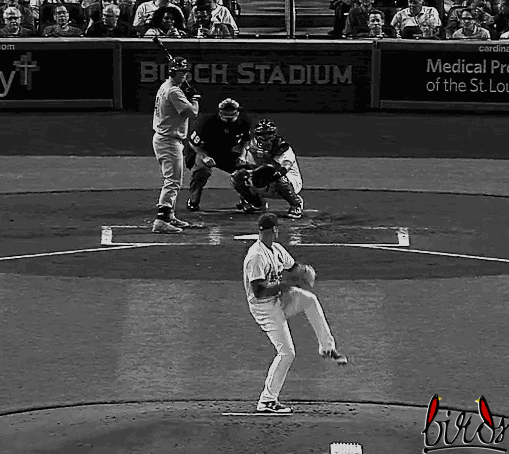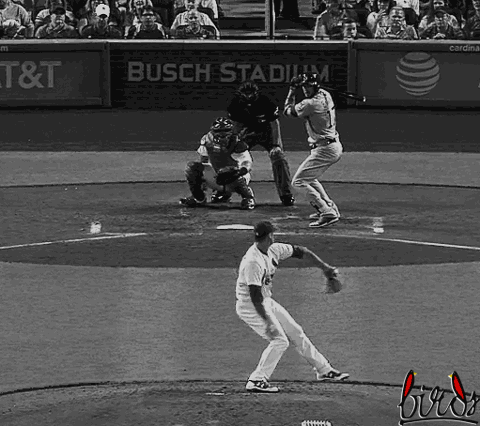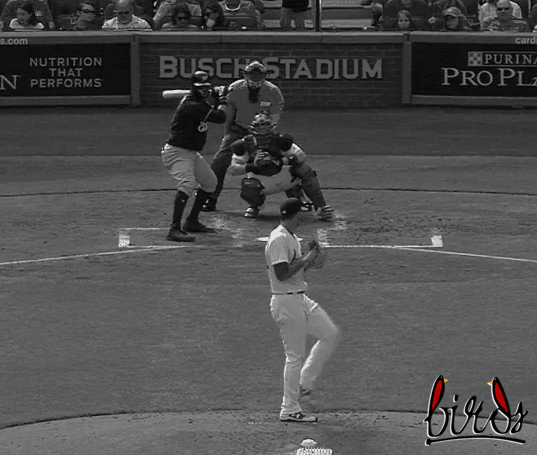
Jack Flaherty -- who turned 22 years old in October -- made his Major League debut in 2017, two and a half years after being drafted 34th overall by the St. Louis Cardinals. While his first six MLB appearances (see below) left much to be desired, the experience should prove vital for the upcoming season (see 2016 Luke Weaver versus 2017 Luke Weaver) and beyond. And frankly, it is downright impressive for a 21 year old (at the time) with only 400.1 MiLB innings pitched to make such an early MLB debut in the first place.
2017 MLB statistics

As referenced above, Flaherty's first 21.1 MLB innings did not go well. There really is no way to sugarcoat it. With that in mind, though, he isn't the first rookie pitcher to struggle during his debut big league season (and yes, Dad, if you're reading this, the sample size is tiny). Yet, despite such a bad start, there exists reason for optimism. His HR/FB% simply will not remain 7.4 percentage points above the 2017 league average. Certainly not when he posted single digit HR/FB% rates from 2014 through 2016, only squeaking into double digits for the first time (to 10.8%) last year with Triple-A Memphis.
Further, Flaherty's wOBA (weighted On Base Average) against was .364, as compared to an expected wOBA (xwOBA) of only .325. Admittedly, Statcast's current version of xwOBA isn't perfect. Our own Zach Gifford -- if he had more free time -- has created the makings of a better xwOBA in my opinion, taking into account spray angle along with launch angle and exit velocity. However, Statcast's version is the best we have right now, and while the sample size limits the reliability, one can still reasonably believe Flaherty was handed at least some batted ball misfortune in 2017.
Frankly, spending two paragraphs on 21.1 innings of data is probably two paragraphs too many. But, knowing that readers were likely to bring it up (i.e. "he was so bad in 2017!"), I felt the need to, at least, address his MLB performance. Now, let's move on to what is considerably more significant in projecting Flaherty's future: his repertoire.
Repertoire (via BrooksBaseball)

Before we discuss the individual pitches within Flaherty's repertoire, let's first turn our attention to two columns I infrequently include in my pitch analysis posts -- horizontal release point and vertical release point. My inclusion of these columns is to highlight the repeatability of Flaherty's release points across all five pitches. Two pitches commonly sequenced together -- the fourseamer and slider -- possess average release points that differ by only 0.6 inches vertically and horizontally. From a tunneling standpoint, it's difficult to get much cleaner than what we saw from Flaherty. Sure, he could elevate his release on the sinker (5.25 feet) a little bit, but let's not get too picky here.
While the changeup remains a work in progress, both the slider and curveball served, and will continue to serve, as deadly swing-and-miss pitches for Flaherty, largely because of his ability to tunnel both of these pitches off his fastballs. In an already-mentioned limited sample, the slider induced whiffs on 49.06% of swings, as compared to 47.62% for the curveball. Again, this has a lot to do with the inherent quality associated with each pitch (particularly the magnitude of movement each exhibits), but when sequenced with a more-than-adequate fastball (fourseamer plus sinker), they truly become deadly weapons (as you will see in the .gifs below).
Strikeout of Scott Schebler

Pitching backwards is very loosely defined as throwing offspeed pitches early in counts (normally reserved for fastballs) and fastballs later in counts (particularly when ahead of the batter). While Flaherty started Schebler off with a first-pitch fourseamer, he failed to find the strike zone. Thus, the definition still fits as Flaherty recorded three straight strikes on an 86.3 MPH changeup, an 83.8 MPH slider, and a 93.8 MPH fourseamer. The repeatability of Flaherty's release points fooled Schebler mightily, as you can see by the breaking down of his swing mechanics on strikes two and three.
Ground out by Kris Bryant

Honestly, the best way to attack Bryant is up and out of the zone. Sure, Flaherty did the exact opposite here, but it worked just the same as he was able to induce a weak 68.1 MPH ground out to Paul DeJong. For those worried about Flaherty's fastball playing up to the MLB-level, this should help calm at least some of those fears. Bryant absolutely mashes fastballs down and in, and yet, Flaherty had little trouble retiring him, despite throwing two down-and-in fastballs. The threat of an ~85 MPH slider obviously played a role -- and with release points so similar, this makes sense -- but even then, the fastball (two straight sinkers, in this case) still needs to do its job. And the fastball certainly did its job versus Bryant.
Ground out by Anthony Rizzo

Can we take a moment to appreciate the magnitude of movement on the two-plane break (think peak Adam Wainwright here), first-pitch curveball to Rizzo? Rizzo is a fantastic hitter (career wRC+ of 133), and he looked foolish swinging at a pitch that ultimately landed in the dirt behind his back foot. Flaherty sequenced the 79.2 MPH curveball well with his harder breaking ball -- an inside 85.4 MPH slider -- for strike two. Two inside breaking balls in a row rendered Rizzo powerless against an up-and-in 95.3 MPH fourseamer. The exit velocity on Rizzo's jam-shot to short? 46.2 MPH. Yes, you can drive faster on some outer roads than the exit velocity of this batted ball.
Swing and a miss by Jonathan Villar

While I enjoy the beauty of a one-plane, purely 12-6 breaking curveball, a two-plane break curveball can be equally as beautiful (and considerably more common, really), in my opinion. As long as the pitch isn't loopy (and subsequently extremely easy to pick up by opposing hitters), there is nothing wrong with a two-plane break curveball. As you can see by Villar's helpless swing, the way Carson Kelly set up for and tracked the pitch, and @cardinalsgifs' trail), this 79.7 MPH curveball was sharp throughout, from its release all the way to Kelly's mitt behind home plate.
Bottom line
No, Flaherty isn't going to all of a sudden step into "ace status" come 2018. However, his repertoire does project as a top-end-of-the-rotation type of starting pitcher. There is plenty to be excited about when it comes to the future of Jack Flaherty. Honestly, of all the pitching prospects rumored to be involved in potential trades, Flaherty is the name I fear the most about losing. Weaver's sophomore success -- despite possessing a demonstrably inferior repertoire to Flaherty's -- should serve as a guide for what we can expect from Flaherty going forward. Unless Chris Archer is truly available, the Cardinals front office should resist the temptation to trade a young, cost-controlled pitcher of Flaherty's caliber.
As always, credit to @cardinalsgifs, BrooksBaseball.net, BaseballSavant.com, and FanGraphs.com for their respective contributions to this post.

